#c: nepalese
Text
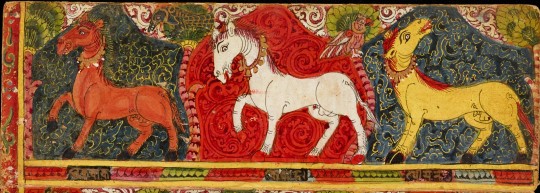
Page 113 from Kalāpustaka (MS Add. 864)
#manuscript#illuminated manuscript#ms add. 864#kalāpustaka#bhagavata purana#mahābhārata#rāmāyana#vetālapañcaviṃśati#jātaka#c: nepalese#y: 1600s#l: sanskrit#t: page
24 notes
·
View notes
Text
I’ve talked about this before but I feel obligated every now and then to talk about the time Jimmy Stewart smuggled a yeti finger from a Nepalese Buddhist monastery to America.
The Pangboche Hand was the skeletal hand of a yeti who was a disciple of Lama Sangwa Dorje, and the finger of the hand was stolen in 1959 by a Bigfoot researcher named Peter C. Byrne after the monks refused to let him take the hand for research. Once Byrne got the finger into India, “It’s A Wonderful Life” star Jimmy Stewart, James “Anatomy of a Murder” Stewart, smuggled the finger out of India and to the States by — allegedly — hiding it in his wife’s lingerie case, because no gentleman would ever check a woman's lingerie case.
Byrne, by the way, was hired to steal the finger by eccentric millionaire oil tycoon Tom Slick, who spent the ‘50s obsessed with cryptozoology before dying in a plane crash in Montana. Not important for the story, important to me personally that you know this.
And I tell you this because “Jimmy Stewart smuggled a yeti finger in his wife’s lingerie case” is a fun collection of words and also to remind you that cryptozoology is awash with colonial assholes who will step over other cultures to find the “proof” they feel entitled to.
#i met peter c byrne before he passed. fascinatingly pompous man#anyways the story has kind of a happy ending#weta workshop made a replica scalp and hand for the monastery in 2011 after the originals were stolen#so. yay#cryptozoology#yeti
633 notes
·
View notes
Text
It was very relaxing to drive on tarmac the whole day although we had to cover some 457 km. We left around 8:00 and drove to a small city named Ouitje which was supposed to have a fabulous bakery and good coffee. Both proved to be correct. But before we could enjoy the Lavazza cappuccinos we had to go to the bank to change some money. What started out with a very professional ticket system so that no one could jump the line turned out to be almost inefficient as crossing the Nepalese border. Every detail was recorded manually on a paper form before the data provided were entered into the computer. Even for two 100,- USD bills the teller had to use the money counting machine and the amount in Rand calculated by the computer was then checked by hand wether it was correct. It took us almost 45 minutes to finally receive the proceeds.
Two cars are out of the rally by now mainly due to the severely corrugated gravel roads. We are lucky our „German Tank“ as the competitors or better fellow travelers call „Missy the Merc“ so far has proved its mettle. Today we shall give her a little service by checking the plugs and everything underneath the car.
The drive today was hot. The landscape has changed from desert to a much greener vegetation. Around 14:00 o‘clock we arrived on the eastern edge of the Etosha pan and for tomorrow we booked a game drive at 6:30 in the morning. The „Mokuti Lodge“ was newly built in 2021 and looks like a 4 seasons resort. They really pamper us a lot!
Best
L&C
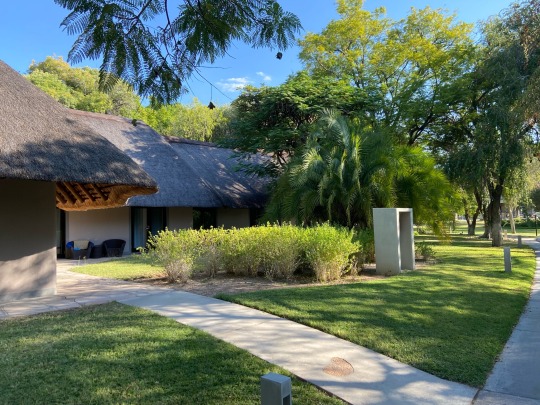


2 notes
·
View notes
Text
As much as the character creator got a big buff in Legendary Edition, it was still never enough to convey the design that my Shepper has in my head. However with so much cc out there TS4 could definitely provide where ME:LE couldn’t in the design department!


This is her! Her name is Mercy Vedati (Shepard isn’t her canon name in my headcanon, I gave her a south asian surname instead c:)
She’s a 32 year old biracial lady (Nepalese-Dominican) and also has CIPA. Like Joker, an illness that would normally have a high mortality rate has a lot of treatments in the ME universe to facilitate Mercy living a life that allows her to be in the military. As a Spacer it certainly helped having access to military health insurance as a dependent!
Her mother: Ekta Vedati is Nepalese and a buddhist, and Mercy was raised in this religion but did not start actively practicing it until after the Sole Survivor incident on Akuze in order to cope with her trauma.
Aligning with her beliefs, she’s a paragon who does not drink, is a vegetarian, and only ever kills in self-defense.
As she’s an infiltrator I model her more after the N7 Shadow in multiplayer, so she uses a sword, rather than a katana esque shape, she owns both a kukri and a kora sword, but only wields one at a time. She also practices bajra, a nepali martial art that Ekta taught her that combines kyokushin, thai boxing, kick boxing and taekwondo to make quite an effective martial art form.
She does not have a hamster, but instead a two-meter Indian rock python named Karma. Her fish tank is filled with banded catsharks and rather than model ships she has her swords mounted on the wall of her cabin.
One of the last memories she had of her father who passed away when she was still a child was of reading her a fantasy book with unicorns in it to calm her when she would have nightmares of the ships they lived on spontaneously exploding. Inspired by the nature of unicorns being a good omen, she started vandalising ships by finding a hidden spot to carve a tiny unicorn into a panel to “protect the ship.” She has since grown out of that fear, but to keep her father’s memory alive she instead carves a little unicorn into each of her guns and on both of her swords.
Her relationship with Garrus is more of a slowburn in my head, with regular sparring sessions on the Normandy Turian style to keep them both sharp in close quarter combat. And it took Mercy time to build up the courage to ask him that fateful question.
I could go on and on about her for days so I’ll cut it here for now dkjhfkdjh
#Mercy Vedati#mercy#Mass Effect#Mass Effect OC#mass effect fanart#shakarian#Commander Shepard#my shepard
10 notes
·
View notes
Text
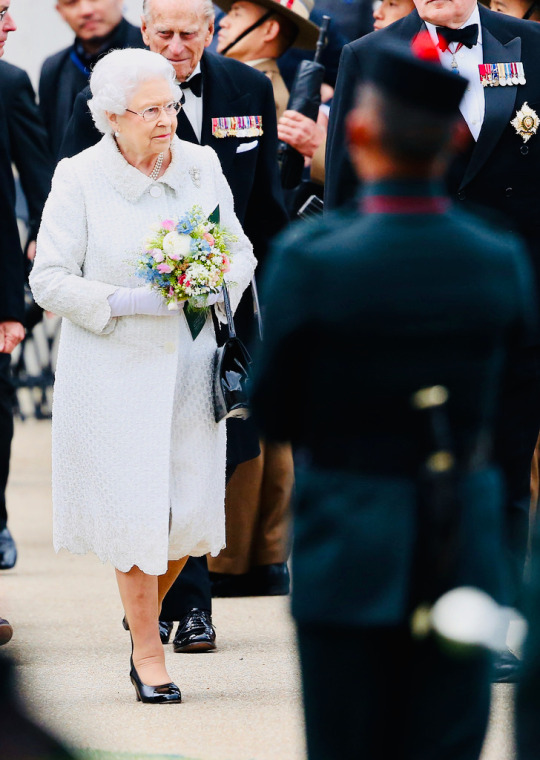
9 June 2015 | Queen Elizabeth II, Prince Philip, Duke of Edinburgh and the Sultan of Brunei are saluted by Gurkhas as they leave the Gurkha 200 Pageant at the Royal Hospital Chelsea in London, England. For two centuries Gurkha soldiers have served alongside British forces in every major conflict, gaining a reputation for bravery and loyalty. During the two World Wars there were over 40,000 Gurkha casualties, while 13 Victoria Crosses have been awarded to Nepalese Gurkha soldiers. The 2015 bicentenary year recognises and celebrates Gurkha service to the Crown. The Pageant is the centrepiece of a series of commemorative events taking place throughout the year. (c) Chris Jackson/Getty Images
2 notes
·
View notes
Text
Best Skincare Products in Nepal for a Healthy Glow

When it comes to maintaining healthy and radiant skin and selecting the best skincare products in Nepal, where the unique climate and environment can pose specific challenges to skin health, it’s essential to choose products that cater to these needs. Lifolab Asia is here to revolutionize your skincare routine with its range of premium skincare products designed to meet Nepalese skin's diverse needs.
Why Skincare Matters
Your skin is your body’s largest organ and acts as the first line of defense against environmental aggressors. The weather in Nepal can vary dramatically — from the cold, dry air of the Himalayas to the hot and humid conditions of the Terai plains. Such variations can take a toll on your skin, leading to issues like dryness, acne, and premature aging.
Lifolab Asia understands these challenges and has developed products that nourish, protect, and rejuvenate your skin, ensuring you look and feel your best, no matter where you are in Nepal.
Introducing Lifolab Asia: A New Era in Skincare
Lifolab Asia is committed to providing the best skincare products in Nepal. that combines the best of nature and science. Our products are formulated with natural ingredients, backed by scientific research, and tailored to address the specific skin concerns people in Nepal face.
Key Products from Lifolab Asia
Hydrating Facial Cleanse
Description: A gentle cleanser that effectively removes impurities without stripping your skin of its natural moisture.
Key Ingredients: Aloe Vera, Green Tea Extract, and Hyaluronic Acid.
Benefits: Keeps your skin hydrated, refreshed, and ready to face the day.
Revitalizing Face Serum
Description: A potent serum designed to rejuvenate and restore your skin’s youthful glow.
Key Ingredients: Vitamin C, Niacinamide, and Retinol.
Benefits: Reduces the appearance of fine lines, improves skin texture, and brightens your complexion.
Moisture Lock Day Cream
Description: A lightweight day cream that provides long-lasting hydration and protection.
Key Ingredients: Shea Butter, Jojoba Oil, and SPF 30.
Benefits: Shields your skin from harmful UV rays while keeping it supple and moisturized.
Nourishing Night Cream
Description: A rich night cream that works overnight to repair and nourish your skin.
Key Ingredients: Collagen, Vitamin E, and Lavender Extract.
Benefits: Enhances skin elasticity, reduces signs of aging, and ensures you wake up to softer, healthier skin.
The Lifolab Asia Difference
What sets Lifolab Asia apart from other skincare brands in Nepal?
Natural Ingredients: We believe in the power of nature, and our products are infused with botanical extracts and essential oils that provide optimal skin benefits.
Scientific Innovation: Our formulations are developed using the latest scientific research, ensuring they are effective and safe for all skin types.
Tailored Solutions: Understanding the diverse climatic conditions across Nepal, our products are designed to address specific regional skin concerns.
Customer Testimonials
Don’t just take our word for it — hear from our satisfied customers!
Sita from Kathmandu: “I’ve struggled with dry skin for years, but since using Lifolab Asia’s Hydrating Facial Cleanser and Moisture Lock Day Cream, my skin has never felt better!”
Rajesh from Pokhara: “The Revitalizing Face Serum has become a staple in my skincare routine. My skin looks brighter and feels firmer.”
Anita from Biratnagar: “I love the Nourishing Night Cream. It’s like a spa treatment for my face every night!”
Conclusion
Choosing the best skincare products in Nepal is essential for keeping your skin’s health and vitality, especially in a country with such various climatic difficulties. Lifolab Asia is committed to providing high-quality, natural, and scientifically proven skincare solutions that are tailored to your specific requirements. Transform your skincare routine with Lifolab Asia today and see your skin glow with confidence.
#derma co-products in nepal#derma products in nepal price#top derma companies in nigeria#best popular skincare brands in nepal#best cosmeceutical skincare brands
0 notes
Text
Top Indo-Canadian Success Stories: Inspiring Journeys of Arun Garg, Aditya Jha, Nisha Pahuja, Alice Benjamin, and Garry Sangha
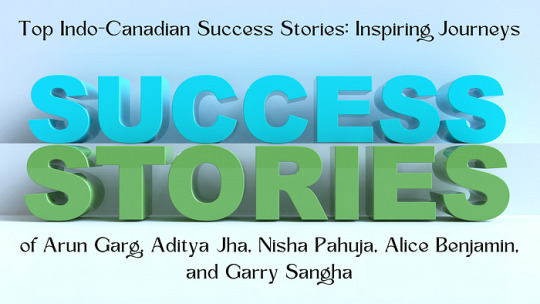
Arun Garg: Medine, Tech, Academia, and Administration
Arun Garg is known as an entrepreneur and tech innovator. He is widely recognized as someone who has played a pivotal role in shaping the landscape of the Canadian technology industry. Born in Agra, India, Garg found himself in a strange situation by his 16th birthday, that of being too young to take admission in medical school in India, despite having already completed his master’s in chemistry, one of the youngest to ever achieve that at the University of Agra. Thus, Garg immigrated to Saskatchewan, Canada to pursue higher studies.
By the age of 27, Garg had earned a PhD in Biochemistry from the University of Regina, as well as a medical degree from the University of British Columbia. As a pathologist, he served as a medical partner in Dr. C. J. Coady Associates between 1979–2011. He became Medical Director of Lab Medicine and Pathology at Royal Columbian Hospital in 1997 and went to assume the responsibility of regional director post the hospital’s absorption into the Fraser Health region. Garg has also served as the president of the British Columbia Medical Association board, and as a board member of the Canadian Medical Association. As an Indo-Canadian, Garg has been active and indeed quite instrumental in deepening the ties of two of the world’s largest democracies, having served as chair of India Marketing Advisory Group, India Advisory Council for Simon Fraser University. He was also a founder member of Canadian Physicians with Interest in South Asia of BC and Canadian Association of Physicians of Indian Heritage.
Aditya Jha: Social Entrepreneurship and Philanthropy
Aditya Jha is one of the most accomplished Canadian entrepreneurs currently living. He is also perhaps one of the most creative entrepreneurs in Canada. Jha traces his ancestry to two South Asian nation, having been born to a Nepalese father and an India mother. His journey from a small town in India to the nation’s capital where he was a scholar in the two of the nation’s most well-respected universities would be impressive enough. However, Jha would transcend all barriers and dared to dream on. After completing his undergraduate degree from the University of Delhi, and Masters from Kurukshetra University, Jha went on to become a research scholar at the prestigious Jawaharlal Nehru University. There, he became actively involved in progressive student politics, and led the country’s largest progressive student body as president in two Indian provinces. By 1979, the political scene in India had gone pear shaped, and due to socio-political unrest, the government had suspended civil liberties and imposed an emergency. With student politics outlawed, Jha was forced to go underground and was instrumental in keeping the embers of democracy glowing through underground activities. Around the same time, he got the opportunity to visit Paris, France, for mainframe computer training with CIT Alcatel for six months. A brilliant scholar, he had qualified for India’s University Grants Commission’s Junior and Senior scholarship and Research Associateship from the Council of Scientific and Industrial Research. And thus, Jha left India. Before immigrating to Canada and starting a career with Bell, Jha worked in Singapore, Australia and Southeast Asian countries.
After a career at Bell, he would go on an entrepreneurial spree, co-founding Isopia, software company, which was acquired by Sun Microsystems for over $100 million, Osellus Inc, another software firm with offices in Toronto and Bangkok, and acquired several businesses including a confectionery from Allan Candy/Cadbury Adams Canada which he renamed Karma. Through his acquisitions, Jha was instrumental in saving more than 150 jobs who were poised to be laid-off. Between 2013–2016, Jha was the CEO of Euclid Infotech. In January 2017, Jha acquired dgMarket International Inc from Development Gateway. dgMarket is the oldest and one of the largest portals for tenders and consulting opportunities globally, with solicitations from national governments and international donor agencies, integrating about 1 million procurement notices per year, covering about $1 trillion tender opportunities. Given what Jha has achieved, he can easily lay claim to being one of top 5 most successful Canadian entrepreneurs ever. Jha is renowned for his philanthropy and is involved in philanthropic activities to promote the interests of first nations in Canada, and the poor in India and Nepal.
Nisha Pahuja: Films and Society
Nisha Pahuja is globally acclaimed filmmaker, having directed Emmy nominated The World Before Her and the Oscar nominated To Kill A Tiger. She has earned praise for her thought-provoking documentaries that delve into complex social issues. Born in New Delhi, Pahuja moved to Canada as a child in the 1970’s. She studied English literature at the University of Toronto, with the aim of making a career in fiction. However, her life changed when she was hired as a researcher for the CBC documentary, Some Kind of Arrangement. Having seen the process of making a documentary up close, Pahuja decided to become a documentary film maker.
The World Before Her was her first major work as an independent film maker. In the documentary, she explored the contradictions that exist in Indian society, where on one hand Bollywood infused glamour encourages a girl to dream of making it in the fashion industry (shown through the eyes of a contestant in the Miss India beauty pageant), and on the other hand the deep rooted traditional values which often took on a violent and militant form (shown through an activist of Durga Vahini, an all-female ultra-right wing conservative organization that opposes beauty pageants as crass commercialization of a woman’s body and antithetical to Indian culture and ethos). Through the film, Pahuja also focuses on the two main characters, their motivations, and dreams. The film, acclaimed globally, released in India around the time of the gruesome Delhi rape case, garnering a lot of attention, and gaining support from renowned film makers like Anurag Kashyap.
Her latest work, “To Kill a Tiger” focuses on an Indian family’s fight to win justice for their daughter who was brutally raped. Shocking and yet inspiring, the film has found support from the likes of Dev Patel, Mindy Kaling, and Rupi Kaur amongst others, who have actively promoted the film. The film has been shortlisted for the Academy Awards, 2024.
Alice Benjamin: Medicine
A recipient of multiple awards, Alice Benjamin is one of Canada’s foremost experts in fetal and maternal medicine. Born in Kerala, India, Benjamin completed her Bachelor of Science from the University of Kerala, before earning a Doctorate of Medicine from the university of Delhi. She did her internship at Lady Harding Medical College and Hospital in Delhi, before immigrating to Canada to complete her residency in ob/gyn at McGill University affiliated Jewish General and Royal Victoria hospitals. This included a fellowship in maternal-fetal medicine.
Benjamin has successfully overseen innumerable high-risk pregnancies during her career as a physician. She created history when she performed Canada’s first successful diabetic renal transplant and pregnancy in 1984, and once again in 1998, when she delivered Canada’s first successful interval delivery of twins, where the babies were delivered six weeks apart. In 1994, Benjamin supervised the first peritoneal dialysis pregnancy and delivery in Quebec, and in 2003, its first successful pregnant peritoneal dialysis on cycler. In 2001, Benjamin delivered the first ever infant whose cord blood stem cells were used for a bone-marrow transplant to cure the mother’s leukaemia. Both infant and mother survived and achieved full health.
Benjamin is actively involved in social causes and philanthropy, especially through World Vision and the Salvation Army. Due to her innumerable contributions, she has been feted with numerous honours, including Officer of the Order of Canada, and Knight of the National Order of Quebec. There are also awards that have been created in her honour and are given out annually to deserving students. They are Alice Benjamin Award for Excellence in Obstetrics, Molson Award for Educational Excellence, Dr. Alice Benjamin Leadership Award, and Dr. Alice Benjamin Global Maternal and Child Health Awards.
Garry Sangha: Construction and Philanthropy.
Having covered Indo-Canadian success stories where education played a crucial role, it is only fair that we look at someone who achieved success despite being denied a fair opportunity to pursue higher education. Garry Sangha is today one of the most easily recognizable names in the Indo-Canadian community of the Lower Mainland. Still very much in his mid-40’s, Sangha commands a vast empire in construction, real estate and hospitality, and has done all this from scratch, in less than 25 years from landing in Vancouver as a raw, 17-year-old. Born in a small hamlet in Punjab, Sangha grew up in an agricultural family. He studied at his village school, and after graduating high school took admission in the local Khalsa college, also getting attracted to student activism around this time. In his very first year, Sangha won student body elections and became president of the student union from a progressive platform. Popular, a keen student and soccer player, Sangha could very well have charted a course in Indian politics. However, in 1997, he immigrated to Vancouver with his entire family, forced to drop out from college. In Vancouver, he took admission in the prestigious British Columbia Institute of Technology in the engineering course. However, given his parent’s advanced age and financial pressures, he dropped out yet again to take up work full time as a construction labourer.
Starting out at the very bottom, Sangha quickly climbed the ranks and was soon a supervisor on major construction sites, specializing in drywall. In 2005, less than a decade of landing in Canada, and still in his mid-20’s, Sangha would launch Crystal Consulting Drywall. Today that single company has grown to be a a group of companies that includes CCI Drywall, CCI Waterproofing, CCI Masonry and Kanin Constructions, by its own right one of the most prestigious brands in Canadian construction. Sangha has since gone to diversify his business ventures, starting a real estate development firm called Allure Ventures and opening one of Lower Mainland’s most opulent fine dining restaurants, Skye Avenue, which boasts of the largest whisky collection available for public consumption globally.
Sangha has also been heavily involved in soccer in British Columbia, having served on the board of BC Soccer, and being instrumental in turning around the flagging fortunes of the oldest soccer club in Surrey, BC, putting in thousands of hours in coaching and management. He is also a serial philanthropist, especially on issues pertaining to mental health, having donated over a million dollars across the last few years to organizations like Children’s Hospital Foundation , The Canucks for Kids Fund , The Food Bank , the City of Backpacks for Kids Program , Canadian Mental Health Association , Urban Resilience Opportunities for Kids , Here 4 Peers, ICBA Wellness, Royal Columbian Hospital Foundation , Langley Memorial Hospital Foundation , BC Children’s Hospital, and the Giving Hearts Gala.
Conclusion
The success stories of Arun Garg, Aditya Jha, Nisha Pahuja, Alice Benjamin, and Garry Sangha highlight the diverse and dynamic contributions of the Indo-Canadian community to Canada’s cultural and economic fabric. These individuals have not only achieved remarkable success in their respective fields but have also made significant contributions to society, inspiring others to pursue their dreams and make a positive impact on the world.
#building construction in canada#canadian entrepreneurs 2023#construction companies in british columbia#construction in canada#construction industry in canada#entrepreneur awards canada#famous canadian entrepreneurs#garry sangha#indo-canadian entrepreneur#largest construction brands in british columbia
0 notes
Text
Is January a good time to visit Nepal?
Is January a good time to visit Nepal?
Absolutely. January is the good time to visit Nepal to explore the wonders.

The crisp winter air enhances the breathtaking landscapes, offering a serene and picturesque setting.
Whether you’re drawn to the cultural richness, planning a trek, or simply seeking tranquility, Nepal in January has it all.
The clear skies, mild temperatures in the lowlands, and snow-covered mountains create a unique and enchanting experience that makes it an ideal month for your Nepalese adventure.
Nepal, a country nestled in the heart of the Himalayas, offers a breathtaking tapestry of landscapes, rich cultural heritage, and diverse experiences for travelers.
When contemplating a visit to this enchanting destination, the timing of your journey can significantly impact your overall experience.
In this exploration, we turn our attention to January as a potential window for discovery.
As the winter season unfolds, Nepal unveils a unique charm, presenting travelers with a distinctive blend of crisp mountain air, vibrant cultural celebrations, and exciting opportunities for trekking amidst snow-draped peaks.
In this article, we delve into the nuances of visiting Nepal in January, examining the weather conditions, cultural festivities, trekking possibilities, and practical tips to ensure a fulfilling and memorable adventure in this captivating land.
Deep Inside for Is January A Good Time To Visit Nepal?
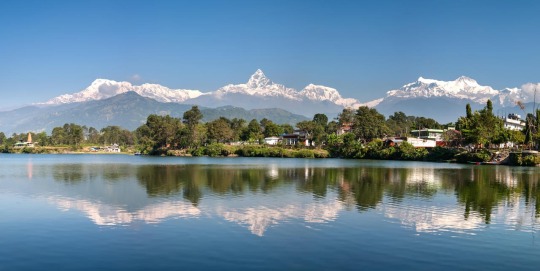
A. Introduction to Nepal as a Travel Destination
Nestled amidst the awe-inspiring Himalayas, Nepal stands as a mesmerizing destination for travelers seeking a perfect blend of cultural richness and breathtaking landscapes.
Home to the world’s highest peaks, including the iconic Mount Everest, Nepal offers a diverse tapestry that ranges from bustling cities with ancient temples to serene mountain villages.
Whether you’re an adventure enthusiast, a cultural explorer, or someone seeking tranquility, Nepal beckons with open arms.
B. Emphasis on the Importance of Choosing the Right Time to Visit
As you plan your expedition to Nepal, one of the critical elements to consider is the timing of your journey.
The choice of when to visit can significantly shape your experience, influencing everything from weather conditions to the cultural tapestry you’ll encounter.
Nepal, with its distinct seasons, invites you to tailor your visit based on your preferences, ensuring that you witness the facets of this country that resonate most with your travel aspirations.
C. Focus on Evaluating January as a Potential Travel Month
In the spectrum of Nepal’s seasons, January emerges as a compelling month for those seeking a unique and tranquil adventure.
The crisp winter air brings a refreshing clarity to the landscapes, and the cultural calendar unfolds with its own distinct charm.
In this article, we delve into the reasons why January might be the ideal time for your Nepalese odyssey, exploring the nuances that make it a captivating choice for every kind of traveler.
Weather Conditions in Nepal in January
Impact of January’s weather on key tourist areas like the Kathmandu Valley and Pokhara is positive, providing an inviting climate for cultural immersion, outdoor activities, and a more intimate connection with the natural beauty that defines these iconic destinations.
1. Kathmandu Valley
In January, the Kathmandu Valley experiences a pleasant climate, making it an ideal time to explore the cultural and historical treasures it holds.
Daytime temperatures hover around 10 to 20 degrees Celsius (50 to 68 degrees Fahrenheit), allowing for comfortable sightseeing and outdoor activities.
The evenings, while cooler, offer a refreshing atmosphere.
Visitors can immerse themselves in the vibrant cultural scene, explore ancient temples, and stroll through the bustling streets of Thamel without the discomfort of extreme temperatures.
2. Pokhara and Surrounding Regions
Similarly, Pokhara and its surrounding areas showcase a delightful ambiance in January.
With daytime temperatures ranging from 8 to 18 degrees Celsius (46 to 64 degrees Fahrenheit), the weather is conducive to enjoying the natural beauty that defines this region.
The famous Phewa Lake, surrounded by snow-capped peaks, becomes a tranquil haven for boating and relaxation.
Additionally, trekking options in the nearby Annapurna region present a serene and less crowded experience, perfect for those seeking a quieter exploration of Nepal’s stunning landscapes.
Festivals and Cultural Events
A. Major Festivals in January
January in Nepal is not only about picturesque landscapes but also about vibrant cultural celebrations.
Two major festivals during this month add a colorful and traditional dimension to your visit.
1. Maghe Sankranti
Maghe Sankranti, celebrated in January, marks the winter solstice and holds immense cultural significance.
Locals engage in rituals, taking holy dips in rivers, and feasting on traditional delicacies.
This festival symbolizes the transition from winter to longer days, and witnessing these age-old customs provides a unique insight into Nepalese traditions.
2. Swasthani Brata Katha
Another prominent festival in January is Swasthani Brata Katha, a month-long ritual dedicated to the goddess Swasthani.
Devotees read sacred stories, perform daily rituals, and visit temples, creating an atmosphere steeped in spirituality.
This festival not only showcases religious fervor but also serves as a cultural spectacle, drawing participants and onlookers into the rich tapestry of Nepalese beliefs.
B. Cultural Significance and Celebrations During This Period
These festivals bring a surge of energy to Nepal in January.
Maghe Sankranti, with its focus on community and family, creates a warm and festive atmosphere.
Families come together to celebrate, share meals, and partake in rituals that have been passed down through generations.
Similarly, Swasthani Brata Katha adds a spiritual touch to the month.
Pilgrims and locals alike engage in a collective expression of faith, filling the air with devotion.
The rituals and ceremonies during these festivals offer travelers a unique opportunity to witness and participate in the rich cultural heritage of Nepal.
Exploring the streets adorned with festive decorations, partaking in traditional meals, and observing the joyous gatherings provide a truly immersive experience into the heart of Nepalese culture during this special time of the year.
Trekking Opportunities
for those seeking a tranquil trekking experience amid stunning winter landscapes, January offers a compelling opportunity to explore the Annapurna Base Camp and Langtang Valley with careful consideration of the unique challenges that come with winter trekking in Nepal.
A. Exploration of Trekking Options in January
January presents a distinctive opportunity for trekking enthusiasts, offering a serene and less crowded experience on some of Nepal’s renowned trekking routes.
#visitNepal
#tourist
#travel
0 notes
Text
Things That Can Damage Your Liver
As we are aware, the liver is one of the most important organs in the human body and is responsible for performing important duties such as detoxifying our system. It helps to detoxify the body, digest nutrients, and help metabolism; it also stores all the vitamins of the human body. Just like all the organs, the liver also needs to be taken care of.

We must do everything to protect our livers from harmful substances and maintain a healthy diet and lifestyle. If you are suffering from a variety of medical conditions and have a poor lifestyle, it can eventually make your liver healthier
So, in this article, we will assist you with understanding things that may cause liver damage
Weight gain
People who are obese or are heavier than the ideal age are more likely to have a higher chance of developing diseases, not just liver disease but also heart-related problems. Maintaining a high-fat diet can lead to diseases like non-alcoholic Fatty Liver Disease (NAFLD)
When a person is overweight, he/she develops a tissue called adipose tissue. This tissue can release harmful proteins that damage the liver tissue, In order to avoid all this, it is very critical to maintain a healthy and well-balanced diet
Heavy alcohol use
Alcohol and Liver Damage are like two sides of the same coin, Extreme use of alcohol always leads to destruction; it can affect the physical and mental health of an individual. When a person is consuming alcohol excessively, he/she is indirectly contributing to liver diseases such as alcoholic hepatitis,Fatty Liver Disease , and cirrhosis.
Medication Overuse
Many individuals, especially in India, are still consuming over-the-desk medication without consulting their doctors. It is very important to understand that there are many medicines on the market that can cause problems for the body. These issues are not only associated with the liver as a whole but also with a variety of other sections of the body. There are several painkillers, one of which is acetaminophen, which can cause severe damage if consumed on a regular basis.
Unprotected Sexual Activity
An individual who is committed to unprotected sexual activity has more liver issues than those who are committed to protected sexual activity.
Hepatitis B and C, which are sexually transmitted illnesses, can possibly have a significant impact on the liver. So, be mindful of your actions and protect yourself and your partner from this kind of illness.
Excess Sugar Consumption
As the Nepalese proverb says, Too much sugar is bitter. If you want to achieve a healthy body both internally and externally, then you should definitely avoid sugar in your diet. A high-sugar diet can lead to non-alcoholic Fatty Liver Disease (NAFLD) and elevated insulin levels Excessive sugar can certainly harm your body and the liver is responsible for maintaining appropriate blood glucose levels. When a person consumes high levels of sugar, it can lead to fat accumulation in the liver.
Overeating at night
Eating too much, especially at night, can have a variety of negative consequences. It can cause an increase in insulin resistance in addition to weight gain and fatigue. Because the liver accomplishes the majority of its work at night, consuming large meals shortly before bed might place undue strain on it. Start consuming vegetables and fruits such as cauliflower, grapes, berries, carrots, etc which have the properties of cleaning the toxic elements
Conclusion
In brief, the liver, like everything else in the body, is an exceptional organ that aids in nutrition processing and digestion. Following the above tips, such as quitting alcohol and reducing sugar intake, can help safeguard your liver from all diseases. It is important that you consume a diet that is nutritious and well-balanced, and if you have any concerns about the state of your health, we recommend you consult with a medical practitioner.
Visit More : https://thehealthcareinsights.com/things-that-can-damage-your-liver/
0 notes
Text

Page 53 from Kalāpustaka (MS Add. 864)
#manuscript#illuminated manuscript#ms add. 864#kalāpustaka#bhagavata purana#mahābhārata#rāmāyana#vetālapañcaviṃśati#jātaka#c: nepalese#y: 1600s#l: sanskrit#t: page
18 notes
·
View notes
Text
Best Nepal Pilgrimage Tour Package
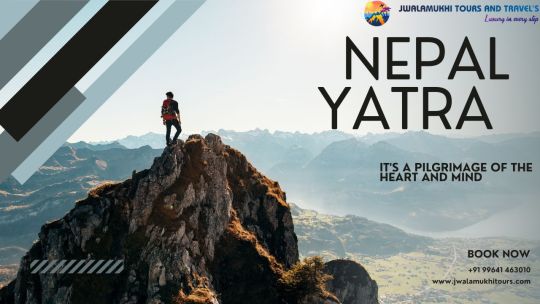
"Embark on a Spiritual Odyssey with JWALAMUKHI TOURS: Your Gateway to the Best Nepal Pilgrimage Tour Package!
Nepal, a land blessed with divine spirituality and rich religious heritage, beckons you on a profound journey of self-discovery and reverence. JWALAMUKHI TOURS, your trusted travel companion, proudly presents the Best Nepal Pilgrimage Tour Package, meticulously designed to guide you through the sacred sites and spiritual sanctuaries of this mystical land.
What Sets Our Nepal Pilgrimage Tour Package Apart?
Tailored Spirituality: At JWALAMUKHI TOURS, we understand that each spiritual seeker's journey is unique. Our pilgrimage tour packages are thoughtfully crafted to align with your spiritual inclinations, ensuring a deeply personalized experience.
Expert Guidance: Our team consists of seasoned experts well-versed in Nepal's religious traditions and practices. They will be your compassionate and knowledgeable companions throughout your pilgrimage.
Holistic Experiences: Beyond the temples and shrines, our packages encompass the essence of Nepal's spirituality. You'll partake in rituals, meditation sessions, and interactions with local spiritual leaders to deepen your understanding.
Diverse Pilgrimage Sites: Nepal is a melting pot of diverse spiritual traditions, including Hinduism, Buddhism, and more. Our tour package encompasses visits to iconic temples like Pashupatinath, sacred monasteries in Lumbini (the birthplace of Lord Buddha), and other hallowed sites.
Cultural Immersion: Immerse yourself in the rich tapestry of Nepalese culture. Explore vibrant markets, savor traditional cuisine, and engage with locals to gain insights into the intertwined relationship between culture and spirituality.
Seamless Logistics: We take care of all the logistics, from comfortable accommodations to transportation, allowing you to focus entirely on your spiritual journey.
Why Choose JWALAMUKHI TOURS for Your Nepal Pilgrimage?
Peace of Mind: With our extensive experience, you can trust us to ensure a hassle-free and spiritually enriching pilgrimage.
Safety First: Your well-being is paramount. We work with certified guides and adhere to strict safety measures to guarantee a secure pilgrimage experience.
Lifetime Memories: Our goal is to create spiritual experiences that stay with you forever. Expect moments of introspection, reverence, and inner peace.
Rediscover Your Spiritual Path with JWALAMUKHI TOURS – Your Key to the Best Nepal Pilgrimage Tour Package. Contact us today and embark on a profound journey to connect with the divine essence of Nepal's sacred sites."
jwalamukhitours
K.Lakshman kumar
099641 46301
C-81, Flat no-301, Mahadevpuram, Balaya nagar, Hyderabad, Telangana 500055
0 notes
Text
Compared to the day before today‘s drive to Chimoio in Mozambique was a piece of cake. Roads were without any potholes and sometimes even a four lane highway. Traffic was not too heavy so that we covered those 370 km relatively fast.
The lunch stop was at a place called „La Rochelle“.
„La Rochelle is a newly re-opened Country House in Penhalonga, near Mutare. It was renowned in the 1950s and 60s for Sir Stephen and Lady Virginia Courtauld’s lavish and warm hospitality and has long been recognised as one of the most celebrated botanical gardens in Zimbabwe as well as an icon of the Art Deco movement. La Rochelle is a place of beauty for Zimbabweans to treasure, a heritage the Courtaulds wanted to share with everyone.“
From there it was just a few kilometers to the border. We are becoming experts in crossing them jumping from window to window. Usually if the officials know what they are doing it involves the following steps:
Country-out:
* Passport control - make sure they don’t forget the exit stamp
* Gate pass - a piece of paper stamped by every official
* Carnet de passage - they have to extract the export slip and stamp the remaining stump to proof the car has left the country
* Drive to gate and present gate pass together with passport and car registration
* Bribe official with USD 3,- to 5,- if asked for lunch money or drinks
* Drive to the other side and pass through all trucks blocking the road
Country -in:
* Find a parking in the shade - lock the car and don’t hand the Carnet the passage to any foreigner claiming to be the official agent
* Pay USD 1,- to 2,- to local guy hanging around to watch the car - pay only when coming back to the car or he is gone
* Fill out entry forms
* Passport control and payment of entry tax - don’t forget the receipts or you will be sent back later in the process
* Customs form and Carnet de Passage - make sure the official knows what he is doing. If not refer him to the internet with pictures explaining the process. Make sure he takes the import slip and confirms the entry with a stamp! Don’t try to find out why he enters every car detail from the Carnet by hand in a ledger no one will ever take a look again and then transfers the exact same information into a computer that breaks down every 10 minutes. It is Africa!
* Go to next window to pay the road tax - make sure to have the exact amount in cash otherwise it might happen they keep the change. Don’t forget the receipt or you come back
* Gate pass with stamps from every section - if not you come back
* Drive up to the gate and see above for bribes
Always try to stay calm! It doesn’t help if you loose it! It only slows down a process which can take something between 1 to 3 hours or more (Nepalese Indian border in 2018 was 6 hours).
On our drive from the border to Chimoio we were held up by the police who wanted us to line up all the cars and drive into the city with a police escort. The 3 star general did not want to understand that this was a bad idea. Waiting in the sun for all 25 cars would have taken at least 3 hours. We then persuaded them to at least let us wait at the next fuel station. He agreed and we took off leaving the police car behind at the fuel station.
Chimoio is a shithole and so is the hotel. They would not let us park inside the compound so Len just shoved the plastic cone to the side and we parked right up front. Other cars followed until the parking was full.
The evening ended in the bar. They served us „Piri piri chicken“ which was excellent.
Best
L&C


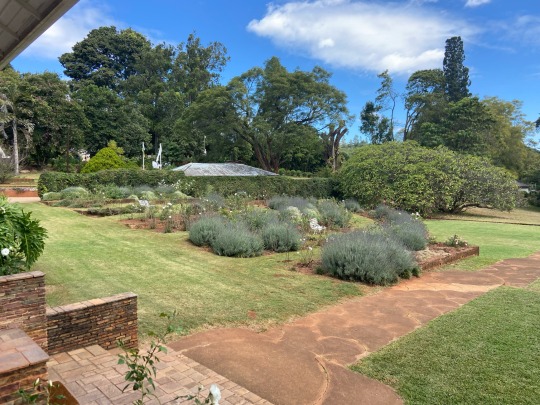

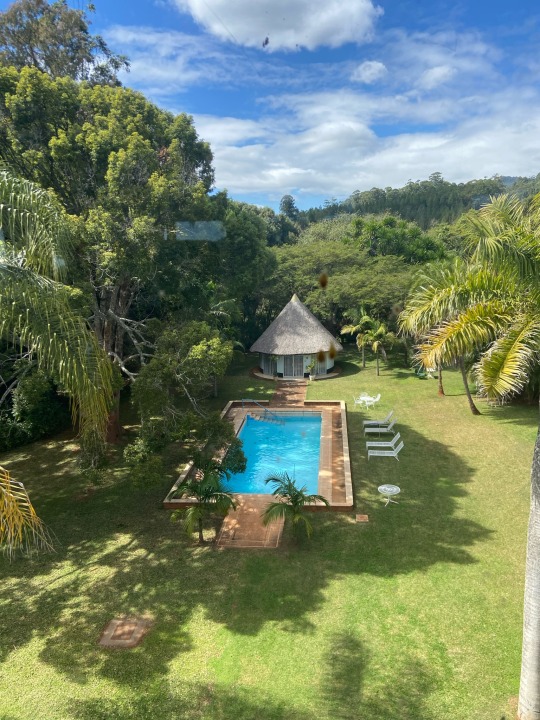
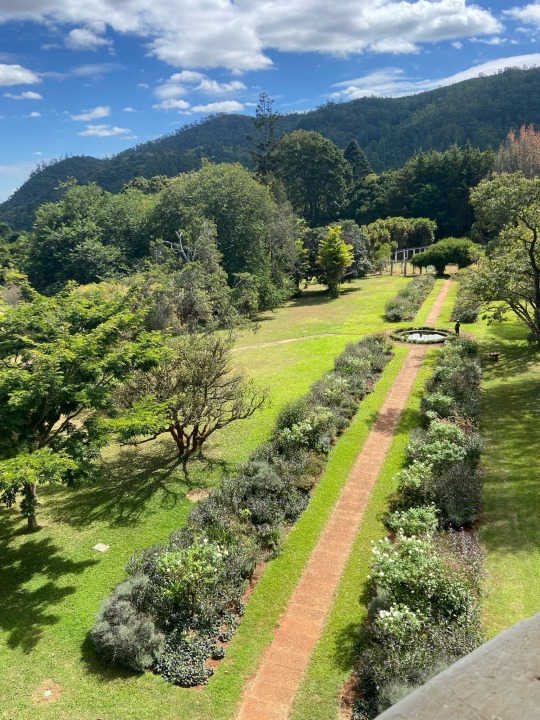
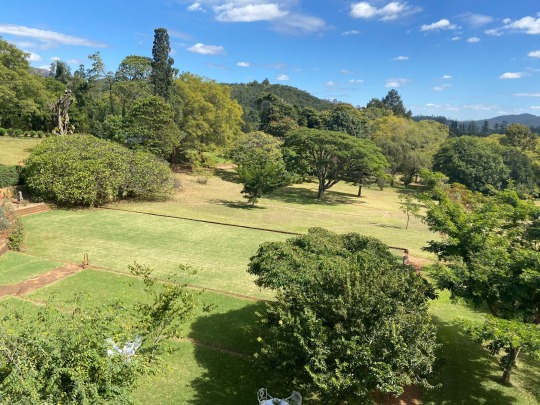
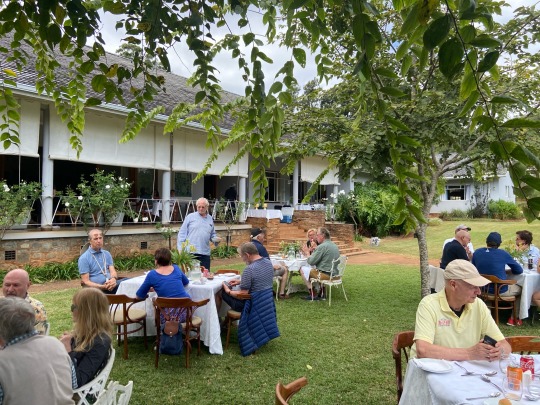
1 note
·
View note
Text
Sikkim

Sikkim is home to diverse ethnic communities West Sikkim takes you on a journey through the region's rich cultural heritage where you can witness traditional arts handicrafts and local cuisine. The various monasteries such as Rumtek Monastery and Enchey Monastery showcase the importance of Buddhism in the state. Exploring Sikkim's culinary delights is a must. The state offers a blend of Tibetan Nepalese and local cuisine. Momo thukpa and gundruk are popular dishes that you must try. The traditional Sikkimese delicacy "gyathuk" is a noodle soup made with local ingredients and is a favorite among locals and tourists alik.
For adventure enthusiasts Sikkim offers a plethora of thrilling activities. Trekking in the Himalayas is an ideal way to immerse yourself in the rugged terrain and witness the unmatched beauty of the region. Popular treks include the Goecha La Trek Dzongri Trek and Singalila Ridge Trek. Additionally river rafting paragliding and mountain biking are popular activities that allow you to soak in the adrenaline rush amidst the pristine surroundings.
Best Time to Visit Sikkim
The best time to visit Sikkim is March through June and September through November. During these months, the weather in Sikkim is ideal for sightseeing and outdoor sports. This is the best visit to explore gorgeous landscapes and rich cultural history as the skies are clear and the temperature is mild to chilly. The weather in hilly areas can be unpredictable, so it's always a good idea to check the forecast and make plans appropriately.
check out our Sikkim tour packages by Flamingo Travels!
Summer Season
Summer in Sikkim lasts from April to June, featuring excellent weather, and is the best time to travel to this stunning area. Summer months in Sikkim have mild to somewhat warm temperatures, making them ideal for outdoor activities and experiencing stunning scenery. This time of year, temperatures range from 5 to 25°C. In comparison to other parts of India, Sikkim's summers are quite mild. Summer in Sikkim is not ideal for hiking, but it is one of the best times for nature lovers to enjoy the lush green landscapes, crystal clear lakes, and new blooms.
Winter Season
From December to February, Sikkim is blanketed in a pure coating of snow, creating a stunning winter wonderland. The temperature during the winter months in Sikkim lowers significantly, making it ideal for snow lovers. Winter in Sikkim provides a once-in-a-lifetime opportunity for sports such as snow hiking, skiing, and soaking in the beautiful views of snow-capped peaks. It's time to curl up in front of a roaring fire, savoring warm local cuisine and taking in the tranquil beauty of this Himalayan wonderland. Be prepared for chilly temperatures, and check road and weather conditions before starting your journey.
Monsoon Season
Monsoon in Sikkim is from June to September, changing the landscapes into a lush green paradise. While the weather in monsoon months in Sikkim can be unpredictable, with intermittent showers and hazy conditions, it adds to the region's mysterious beauty. Nature flourishes, providing stunning views of waterfalls and bright flora. It's a calmer time of year with fewer visitors, which makes it a perfect time for solitude and reflection. It is crucial to note, however, that severe rain may influence road conditions, so check for travel advisories and plan appropriately.
0 notes
Text
Gangtok- Capital City of Sikkim
Gangtok- Capital City of Sikkim:
Gangtok- the capital city of Sikkim, is one of India’s most attractive hill destinations, being incredibly appealing, refreshingly lively, and cloud-wrapped. The city, which is at a height of 1650 meters above sea level, offers amazing views of Mt. Kanchenjunga on clear days. Gangtok is in East Sikkim. It is without a doubt one of the most picturesque hill stations in the country. Gangtok is a living and active slice of northeast beauty, with just the perfect mix of everything from a fusion of ethnic identities to urbanization. Top Sikkim Tour
Sikkim arose as a sovereign state against the backdrop of Tibetan and Bhutanese assaults, during which time the kingdom had varied degrees of freedom. Sikkim was an autonomous country until 1975, when it united with India following a decisive poll. Top Sikkim Tour
During the peak season, temperatures range between 11-24°C. This takes place between March and April. With bright sky and weather allowing you to see the snow-covered mountains, this time of year is ideal for sightseeing and adventure sports.
Sikkim is a unique mix of many cultures’ customs, religions, and traditions. Sikkim has been occupied by three tribes from ancient times: the Lepchas, the Bhutias, and the Nepalese. Even now, they continue to shape the people’s community and culture in Sikkim. Top 10 Sikkim Tour
MG Road, Gangtok’s major street, is a fantastic spot to hang out during the day and a main market area. Festivals are an important aspect of Gangtok’s culture and heritage because it is the capital city of Sikkim. Popular celebratrions of Gangtok includes Saga Dawa, Phang Lhabsol, Dashain, Flower Festival, Gangtok- the capital city of Sikkim Food and Culture Festival, Diwali, Losar, and Makar Sankranti.
Gangtok has an aura of mystique, with its twinkling and starry lights as dusk comes to dawn.The charm of this small hamlet is only amplified by abundant rainfalls and hazy mornings. Gangtok is a popular destination for hikers and campers heading to the Himalayan mountain ranges. People have begun to visit the North-Eastern states in search of thrills, adventure, serenity, and other things. Gangtok Tourism is significant for the Northeast area because of its natural beauty, cuisines, gastronomy, and cultural variety.
How to Reach Gangtok Capital City of Sikkim:
By Air
The nearest airport to Gangtok is Bagdogra Airport, West Bengal. Bagdogra and Gangtok- the capital city of Sikkim are approximately 124 km apart. One can also use the Sikkim Tourism Development Corporation’s helicopter services, which fly daily from Bagdogra to Gangtok and take around 20 minutes to reach. Top Best Places of Sikkim
By Rail
The nearest railways are at New Jalpaiguri, which is 117 km away from Gangtok. The railway station is well connected to both big and minor cities in the nation. One can hire private taxis from here.
By Road
Gangtok is well connected by road to Siliguri, Darjeeling, and Kalimpong through National Highway 31A. There are several frequent Sikkim state transport buses that run between Gangtok and Siliguri. Private buses, jeeps, and taxis are also available from Siliguri and Bagdogra.
Places to visit in Gangtok
Nathu La
Nathu La, one of the world’s highest motorable routes over a mountain pass in the Himalayan ranges. It is 56 km from Gangtok- the capital city of Sikkim and 14450 feet above sea level on the Indo-Tibetan border. Nathu La Pass, located on the Old Silk Route, connects Sikkim to China’s Tibet Autonomous Region. Only Indian nationals are granted a valid permission to access Nathu La Pass. The permission is obtained by submitting an application to the Tourism and Civil Aviation Department. This is possible with the assistance of a licensed travel agent.
Baba Mandir
Baba Mandir is a shrine established near Harbhajan Singh’s Samadhi, located 64 km from Nathu La and Jelepla Pass at an elevation of 4000 m. The old one was constructed on the location of the bunker where Baba Harbhajan served in the Indian Army. The new one was erected in close proximity to Changu Lake. Though the temple is located on the side of a road, it is surrounded by stunning mountains, providing travelers with a spectacular sight. Best Place in Sikkim
Lake Tsmogo
It is locally known as the Changu Lake. Tsomgo Lake in East Sikkim is the most visited lake in Sikkim. Tsomgo Lake, located 35 km from Gangtok- the capital city of Sikkim and at an elevation of 12,000 feet, is a must-see for any visitor. The lake is surrounded by high and rough mountain terrain and is covered with snow from early winter until late April. Tsomgo, associated with several tales and mythology, is treasured as a sacred lake by the people of Sikkim. The lake location also offers a variety of food stalls providing snacks and beverages, as well as rides on colorfully adorned yaks and mules.
Gonjang Gumpa
Gonjang Monastery is around km far from the city of Gangtok. It is located at an elevation of 6066 feet. Monastic education, Tibetan language, and English are all taught to monk pupils here. The monastery educates its students via close and comparative study of Indian and Tibetan Buddhist philosophy focused on moral ideals. The Dalai Lama blessed the monastery, and its proximity to Gangtok makes it a popular destination for those looking to visit a monastery close to town.
Bakthang Falls
Bakthang is a beautiful waterfall on the North Sikkim Highway in Gangtok, about 5 km from the Gangtok SNT Bus Station. It is one of the most beautiful spots to visit in Gangtok and one of the most popular waterfalls in Gangtok, located near Tashi View Point. A tranquil waterfall runs down the rock, creating a tiny pool below. It is situated on the 31A National Highway, which connects to North Sikkim. Some adventurers can even try rappelling down the cliff on a fixed rope, which is organized by the area’s tourist committee.
Lhasa Falls
Lhasa Falls is 1 km from Tashi Point, one of Gangtok’s most popular tourist attractions in Sikkim. Lhasa Falls is a tiny waterfall that runs down the mountain and may be seen on the side of the road when travelling from Tashi View Point. There are large rocks which visitors generally climb in order to take beautiful shots and enjoy the environment. It is a must-see attraction for anybody travelling with family or friends. Top Sikkim Tour
Rumtek Monastary
Rumtek Monastery is a wonderful Tibetan Buddhist monastery located 24 km from Gangtok. It was constructed to aid in the spreading of Buddha’s teachings throughout the world. The Dharma Chakra Centre monastery is surrounded by verdant, quiet, and serene hills. After Dharamshala and Tawang, it is one of India’s most respected monasteries. Monks assemble at the Rumtek Monastery’s courtyard. The Sanctum within it houses the Golden Stupa as well as portraits and sculptures of Lord Buddha.
Tashi View Point
Tashi Viewpoint, located 8 km from centre Gangtok, is a beautiful wonder from where visitors may obtain a glimpse of the spectacular Mount Sinilochu and Mount Kanchenjunga. Tashi Namgyal, the ruler of Sikkim from 1914 until 1963, erected it, and it is named after him. Tashi Viewpoint is located in an ideal location and offers a stunning view of the snow-capped Himalayas. You may also enjoy breathtaking views of Labrang Monastery and Phodong Monastery, both of which are located close the Tashi View Point.
Kupup Lake
Kupup Lake, a high-altitude lake shaped like an elephant, is one of Gangtok’s highlights and a Silk Route stop. It is also known as the Elephant Lake and is located at a height of 13,066 feet on the way to the Jelep la Pass, which connects India and China. The right side of the lake resembles an elephant’s trunk, while the left mimics the animal’s tail. Locals refer to the lake as Bitan Cho. A beautiful valley surrounds the lake, and the little settlement of Kupup is the closest feature to the lake. Best Sikkim Tour Places
Ganesh Tok
Ganesh Tok is a tiny Ganesh Temple located 7 km from Gangtok at an elevation of 6500 metres. A panoramic view of Gangtok, the Raj Bhavan complex, and Mount Kanchenjunga can be viewed from here, and it is a stunning sight. Ganesh Tok is surrounded by hills, terrain, and stunning mountains. It is so congested that worshippers are forced to worship Lord Ganesha on all fours. However, the temple (dedicated to Lord Ganesh) is so small that it can only accommodate one person at a time. With its exotic surroundings and soothing atmosphere, the exquisite location brings you closer to nature. Best Sikkim Tour Places
Namgyal Institute of Tibetology
Namgyal Institute of Tibetology is a significant Tibetan institute dedicated to the promotion and advancement of Tibetan language, art, religion, and culture. Its structure has traditional Tibetan architecture set among lush greenery, making it a spectacular sight for tourists. The Tibetan library on the first level houses one of the world’s greatest collections of Tibetan documents and literature. On the ground level, there is a museum with a rare collection of sculptures, coins, masks, thangkas, Tibetan art work & items, and antique texts donated by renowned monks and monarchs.
Gangtok Ropeway
Gangtok Ropeway offers a stunning bird’s eye view of the valley below and is regarded as one of the most fascinating things to do in Gangtok. The twin cable zig zag ropeway, which opened in 2003, can carry up to 24 passengers and spans a distance of 2 km back and forth. The ropeway’s starting location is Deorali Bazar, which is located in the middle of the city and is easily accessible to most people. It was built in 2003 and links to the Tashiling Secretariat via the Sikkim Legislative Assembly. Best Sikkim Tour Places
Do-drul Chorten
Trulshik Rinpoche, a disciple of the 14th Dalai Lama, erected the Do Drul Chorten, a massive stupa near Gangtok, in 1946. The stupa is surrounded by 108 prayer wheels with sacred mantras inscribed on them. Inside, some precious religious Kangyur writings and artifacts related with Dorje Phurba have been meticulously preserved. Do Drul Chorten is home to a dharma preaching centre founded by Dodhrubchen Rinpoche. Chorten Lakhang, which houses two massive sculptures of Guru Padmasambhava, surrounds the stupa. This is a charming small spot for anyone looking for peace and quiet among the hills.
Himalayan Zoological Park
Himalayan Zoological Park, Sikkim’s first zoo, allows visitors to learn about the region’s biodiversity. The zoo, which is home to Snow Leopards, Himalayan Palm Civets, Red Pandas, and Himalayan Black Bears, is unlike others in the country. Animals are maintained in open enclosures in natural habitats rather than cages, making the entire experience more enjoyable. The zoo, which is located at an elevation of 1,780 metres, also provides spectacular views of Mount Kanchenjunga.
Flower Exhibition CenterBest Sikkim Tour Places
The Flower Exhibition Center is a short walk from MG Road and features a wide range of flowers from all across Sikkim. The exposition centre is a haven for nature enthusiasts all year, mainly during the annual flower show, which takes place from April to May. The exhibition centre, which is home to many rare and uncommon plant species, provides a nice diversion from the hustle-bustle of the busy town.
0 notes
Link
Check out this listing I just added to my Poshmark closet: Antique Late 19th C. Nepalese Gurkha Kukri Knife with Chamak & Karda Intact.
0 notes
Text
CEPC EXPORT EXCELLENCE AWARDS for textile industry

The CEPC Export Excellence Awards for the textile industry are presented by the Cotton Textiles Export Promotion Council (CEPC), an organization under the Ministry of Textiles, Government of India. These awards recognize and honor outstanding exporters in the cotton textiles sector for their exceptional performance and contribution to India’s textile exports.
The CEPC Export Excellence Awards cover various categories and segments of the textile industry, including spinning, weaving, knitting, processing, and value-added products. The specific award categories may vary from year to year, but they typically encompass areas such as:
Highest Exporter: Recognizes the company with the highest export value in a specific category or overall.
Best Product Range: Honors companies that have demonstrated excellence in offering a diverse and innovative product range.
Most Innovative Product: Recognizes companies that have developed and introduced unique and innovative textile products.
Emerging Exporter: Awards companies that have shown significant growth and potential in textile exports.
Sustainability and CSR: Acknowledges companies that have demonstrated exceptional commitment to sustainability practices and corporate social responsibility initiatives.
The CEPC Export Excellence Awards aim to encourage and inspire the textile industry to achieve higher export standards, foster innovation, and promote sustainable practices. They serve as a platform to showcase the achievements of exporters and highlight their contributions to India’s textile exports.
Product-wise Highest Export Performance (FOB Value-wise) – CEPC- EXPORT EXCELLENCE AWARDS FOR THE YEAR 2018-19
a. Hand-knotted Woollen Carpets including Indo-Nepalese Carpets.
i. Gold Trophy : M/s Obeetee Pvt. Ltd., Mirzapur
ii. Silver Trophy : M/s Jaipur Rugs Co. Pvt. Ltd., Jaipur
iii. Bronze Trophy : M/s Rupesh Kumar & Sons, Bhadohi.
b. Handmade Woollen Tufted Carpets/Handloom Carpets
i. Gold Trophy : M/s Obeetee Pvt. Ltd., Mirzapur
ii. Silver Trophy : M/s Obeetee Textiles Pvt. Ltd., Mirzapur
iii. Bronze Trophy : M/s Jaipur Rugs Co. Pvt. Ltd., Jaipur
c. Handmade Silk Carpets.
i. Gold Trophy : M/s Rugsotic, Bhadohi
ii. Silver Trophy : M/s Kaka Carpets, Bhadohi
iii. Bronze Trophy : M/s Kaka Overseas Ltd., Gurgaon.
d. Handmade Woollen Durries/Druggets/ Shaggy :
i. Gold Trophy : M/s Heritage Overseas, Panipat
ii. Silver Trophy : M/s Rupesh Kumar & Sons, Bhadohi.
iii. Bronze Trophy : M/s Obeetee Pvt. Ltd., Mirzapur.
Certificate of Merits:
1. M/s Global Overseas, Bhadohi
2. M/s Cottage Industries Exposition Ltd., New Delhi.
3. M/s Shobha Woollens Pvt. Ltd., Bhadohi
4. M/s Surya Carpets Pvt. Ltd., Bhadohi
5. M/s Saraswati Global Pvt. Ltd., Jaipur
6. M/s Onyx Rugs, Bhadohi
7. M/s J.I. International, New Delhi.
8. M/s Sahil Plastic (P) Ltd., Mumbai
9. M/s Agni, Bhadohi
10. M/s Ideal Carpets Ltd., Bhadohi
11. M/s Ideal Carpet Industries, Bhadohi
12. M/s Bhadohi International, Bhadohi
Yadavendra Kumar Roy ED (Executive director) with SHOBHA WOOLLENS PRIVATE LIMITED, is registered with the Ministry of Corporate Affairs (MCA), bearing DIN 01052005. He is an Indian staying in Varanasi, Uttar Pradesh, India.
Yadavendra Kumar Roy is currently associated with 3 Companies and is director with Shobha Woollens Private Limited, Kaka Overseas Limited. As a Managing Director with Rugsotic Private Limited.
Source: https://allinfohub.net/cepc-export-excellence-awards-for-textile-industry/
1 note
·
View note